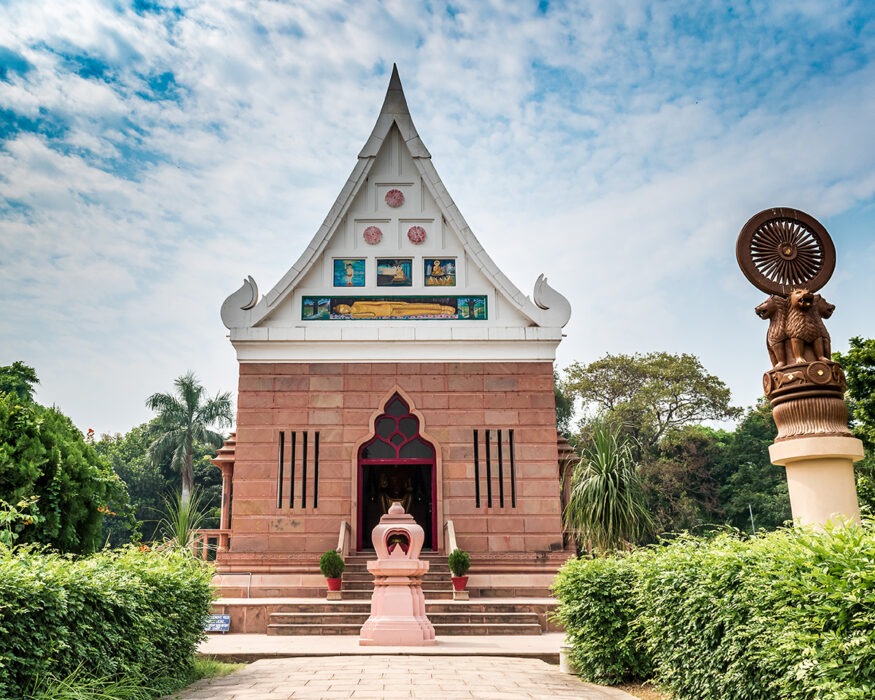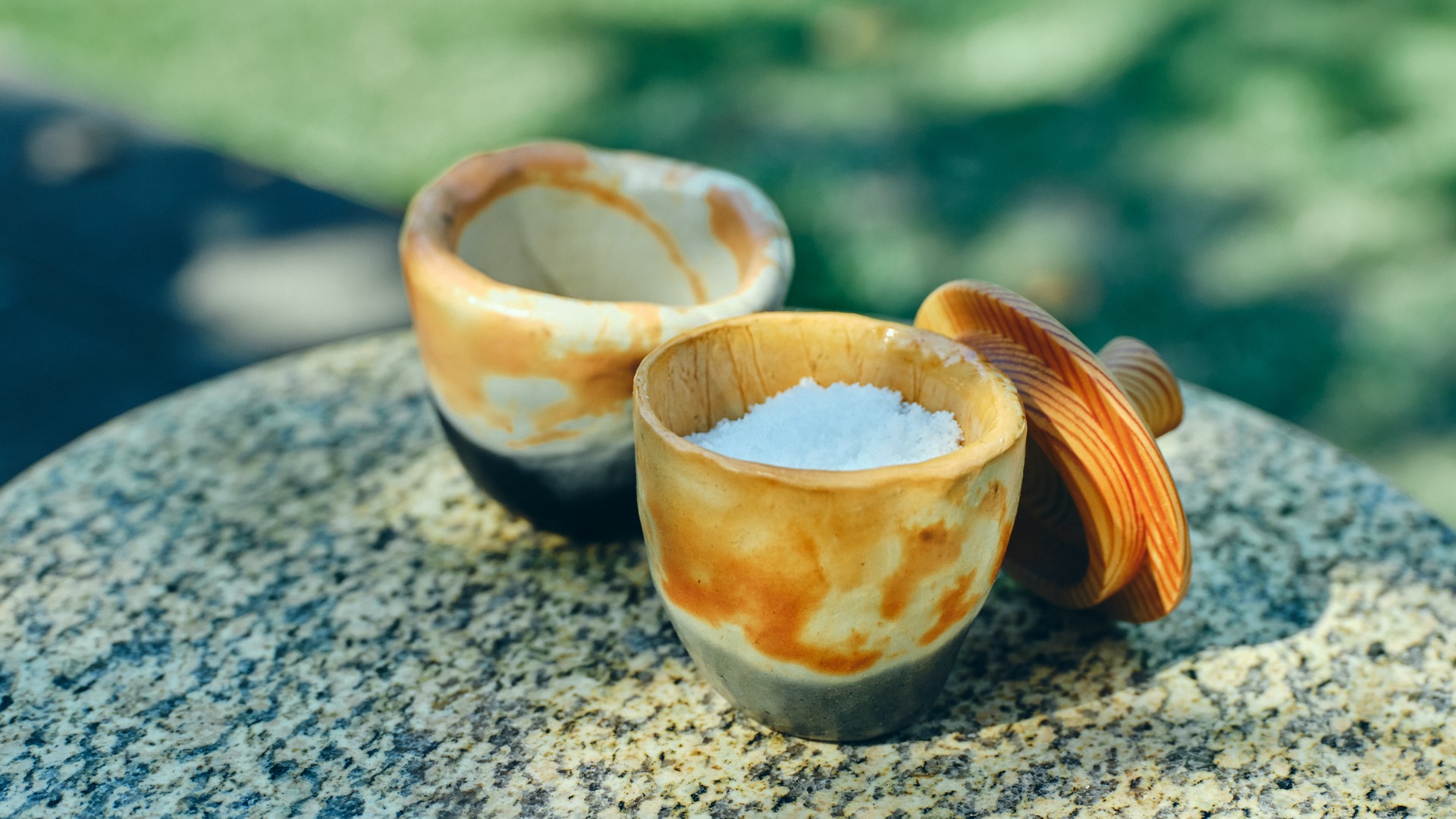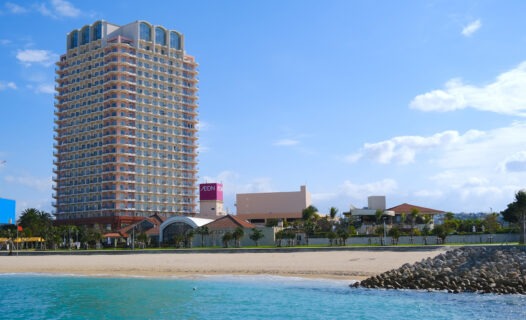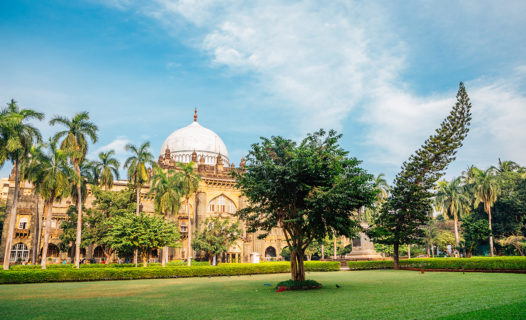Welcome to Sarnath: A Spiritual Gem
Step into the heart of Buddhism at Sarnath, a place steeped in history and spirituality. This ancient town, located just a stone’s throw from Varanasi, holds profound significance as the site where Buddha delivered his first sermon after attaining enlightenment. Each year, Sarnath comes alive with celebrations for Dhammachakra Pravartan Day, an event that draws pilgrims and visitors from around the globe, eager to connect with its rich heritage and cultural vibrancy. With its deep-rooted history and the serene atmosphere, Sarnath is not just a destination; it’s a spiritual experience waiting to be discovered.
Discovering Sarnath: A Spiritual Haven
For those on a Sarnath pilgrimage, the journey is about more than just visiting historical sites; it’s a chance to immerse oneself in the teachings of the Buddha. The tranquil surroundings, dotted with ancient stupas and monasteries, offer a perfect backdrop for reflection and meditation. Here, you can walk in the footsteps of countless devotees who have come to absorb the wisdom imparted at this sacred site.
As you explore, you’ll find the Sarnath Buddha teachings resonate through the air, inviting you to pause and reflect. Whether you’re sitting quietly in the shade of a tree or joining a guided meditation session, the spiritual experiences in Sarnath are profound and transformative. The town is a living testament to the principles of peace, compassion, and enlightenment that Buddha preached, making it an essential stop for anyone interested in Sarnath history and culture.
The Essence of Dhammachakra Pravartan Day Celebrations
Mark your calendars for Dhammachakra Pravartan Day, a festival that celebrates the turning of the wheel of Dharma. This event commemorates the moment when Buddha shared his insights with the five ascetics, laying the foundation for Buddhism. The atmosphere during the celebrations is nothing short of electric, filled with the sounds of prayers, chants, and the rhythmic beating of drums.
On this special day, thousands gather to participate in rituals and ceremonies that honor the teachings of Buddha. The Dhammachakra significance extends beyond the spiritual; it fosters a sense of community among attendees, as people from diverse backgrounds come together to celebrate a shared belief. The festival is a vibrant tapestry of cultural heritage, where you can witness traditional dances, enjoy local delicacies, and engage in discussions about Buddhist philosophy.
For attendees, the emotional connection to the event is palpable. Many describe it as a time of renewal and reflection, where the teachings of Buddha come alive in a communal atmosphere, creating lasting bonds among participants. If you’re looking to experience Buddhist festivals in India, this is one event you won’t want to miss!
Festivities and Events: What to Expect
As the festival approaches, Sarnath buzzes with excitement. The Sarnath celebrations feature a variety of events that cater to both spiritual seekers and cultural enthusiasts. Expect a rich schedule filled with prayers, meditation sessions, and community gatherings that allow for deep engagement with the teachings of Buddha.
From early morning rituals at the Sarnath temples to evening prayer ceremonies, there’s something for everyone. The community events are particularly special, providing opportunities to mingle with locals and fellow travelers. Each moment spent in Sarnath during this time is a chance to connect with the essence of Buddhism and its teachings.
As the sun sets, the celebrations continue with lantern-lit processions and cultural performances that showcase the artistic traditions of the region. Whether you’re joining a meditation retreat or participating in a lively discussion about Buddhist philosophy, each event is designed to deepen your understanding and appreciation of this rich spiritual heritage.
Exploring Sarnath’s Historical Context and Folklore
Beyond its spiritual significance, Sarnath is a treasure trove of history and folklore. The town is home to several Sarnath historical sites that tell the story of its past. The famous Sarnath Stupa, built during the reign of Emperor Ashoka, stands as a monument to the teachings of Buddha and is a must-visit for anyone interested in Sarnath archaeological sites.
As you wander through the ruins, you’ll encounter stories of ancient monks who once roamed these grounds, sharing wisdom and guiding seekers on their paths. Local folklore adds a layer of enchantment to the experience, with tales of miracles and enlightenment that have been passed down through generations. Each stone and relic holds a story, inviting visitors to ponder the profound legacy of this sacred place.
For a deeper dive into Sarnath’s rich history, consider joining a guided tour that highlights the key monuments and shares intriguing anecdotes about the town’s past. From the majestic Dhamek Stupa to the tranquil Mulagandha Kuti Vihar, each site offers a unique glimpse into the life and teachings of Buddha.
Culinary Deep Dive: Savoring Sarnath’s Local Cuisine
When it comes to exploring Sarnath, the experience is incomplete without indulging in its local cuisine. The flavors of this region are as rich as its history, offering a delightful blend of traditional dishes that reflect the cultural heritage of the area. During the Dhammachakra Pravartan Day celebrations, local eateries come alive with festive dishes that are sure to tantalize your taste buds.
Start your culinary adventure with kachoris, crispy fried pastries filled with spicy lentils, often served with tangy chutneys. Pair it with a steaming cup of chai for a refreshing start to your day. As you wander through the bustling streets, don’t miss out on the famous litti chokha, a traditional dish made of wheat balls stuffed with spiced gram flour, served with mashed spiced eggplant and tomato. It’s a comfort food that warms the soul!
For those with a sweet tooth, Sarnath offers delectable treats like jalebi and kheer. The crispy, syrupy jalebi is a festival favorite, while the creamy kheer, a rice pudding flavored with cardamom and garnished with nuts, is perfect for satisfying your dessert cravings. Local sweet shops are brimming with these delights, making them ideal spots to take a break and enjoy the festive atmosphere.
As you savor these culinary delights, take a moment to chat with the locals. They are often eager to share stories about the dishes and their significance in Sarnath’s culture. Dining here is more than just a meal; it’s a chance to engage with the community and immerse yourself in the local way of life.
Practical Information for Travelers: Tips and Tricks
Ready to explore Sarnath? Here are some handy travel tips to make your visit smooth and enjoyable. First off, the best time to visit is during the cooler months, from October to March, when the weather is pleasant for sightseeing and outdoor activities.
Entry to the major sites, including the Sarnath Stupa and the Archaeological Museum, is usually free or has a minimal fee, making it accessible for all travelers. Most sites are open from early morning until sunset, so plan your visits accordingly to catch the stunning views at dusk.
For accommodations, you’ll find a range of options from budget guesthouses to more upscale hotels. Booking in advance, especially during the Dhammachakra Pravartan Day, is highly recommended to secure your stay. You can explore great deals on Agoda for hotels that suit your needs and budget.
Transportation within Sarnath is fairly straightforward. Auto-rickshaws and cycle rickshaws are available for hire, providing a fun way to get around. If you prefer walking, the town is compact and pedestrian-friendly, allowing you to soak in the sights at your own pace.
Sustainability and Conservation: Responsible Tourism in Sarnath
As you enjoy the spiritual and cultural richness of Sarnath, consider embracing responsible tourism. This means being mindful of your impact on the environment and local community. Simple actions like minimizing plastic use, respecting sacred sites, and supporting local businesses can go a long way in preserving the beauty of Sarnath.
Participating in community events during the Dhammachakra Pravartan Day not only enhances your experience but also supports local traditions. Engage with local artisans, purchase handmade crafts, and enjoy dishes made from locally sourced ingredients. These practices help sustain the cultural heritage and provide economic support to the community.
Outdoor Activities and Spiritual Experiences
Sarnath isn’t just about temples and stupas; it’s also a fantastic place for outdoor activities that enhance your spiritual journey. Join a meditation retreat at one of the local monasteries, where you can learn mindfulness techniques and deepen your understanding of Buddhist practices. These retreats often include guided sessions, allowing participants to immerse themselves in the tranquil ambiance of Sarnath.
If you’re up for some adventure, consider renting a bicycle to explore the lush surroundings. Riding through the countryside not only offers stunning views but also provides a unique perspective on the daily lives of the local people. You might even stumble upon hidden gems—small temples, serene ponds, and friendly villagers eager to share their stories.
Shopping Guide: Souvenirs and Local Crafts
Shopping in Sarnath is a delightful experience, especially if you’re looking to take home a piece of its rich culture. The local markets are filled with unique crafts, including handwoven textiles, pottery, and traditional Buddhist artifacts. Look for thangka paintings, intricate artworks that depict Buddhist deities and scenes, which make for stunning home decor.
Don’t forget to explore the local shops for handmade prayer beads and incense, perfect for those who wish to carry a piece of Sarnath’s spirituality with them. Bargaining is common, so don’t hesitate to engage with the shopkeepers and strike a good deal!
Transportation Details: Getting to and Around Sarnath
Getting to Sarnath is straightforward, especially if you’re coming from Varanasi. The town is just about 10 kilometers away, making it a quick and easy trip. You can take a taxi, auto-rickshaw, or even a local bus directly to Sarnath. For those arriving by train, Varanasi Junction is the nearest railway station, with frequent connections from major cities across India.
Once in Sarnath, local transportation options include auto-rickshaws and cycle rickshaws, which are perfect for short distances. If you’re feeling adventurous, consider walking or cycling to soak in the serene environment and discover hidden corners of this historical town.
Seasonal Travel Insights: Best Times to Visit Sarnath
Understanding the seasonal variations can greatly enhance your visit to Sarnath. The cooler months from October to March are ideal for exploring the town, as the temperatures are mild and pleasant. This is also when the Dhammachakra Pravartan Day celebrations take place, making it a vibrant time to experience the local culture.
During the summer months (April to June), temperatures can soar, making outdoor activities less enjoyable. However, if you prefer a quieter experience with fewer crowds, this could be the perfect time to explore Sarnath’s historical sites at your own pace. The monsoon season (July to September) brings lush greenery but can also lead to heavy rainfall, so be prepared with appropriate gear if you visit during this time.
Safety and Health Guidelines for Visitors
Your safety and health are paramount while visiting Sarnath. It’s advisable to stay hydrated, especially during the warmer months. Carry a reusable water bottle to minimize plastic usage. Most local eateries serve fresh food, but it’s wise to choose places that are busy and well-reviewed to ensure hygiene standards.
As with any travel destination, be cautious of your belongings and avoid displaying valuables in crowded areas. If you’re planning to participate in outdoor activities, wear comfortable shoes and sun protection to enjoy your experience fully. If you have any health concerns, consult with local medical facilities, which are equipped to assist tourists.
Commonly Asked Questions (FAQs) about Sarnath and the Festival
As you prepare for your visit, here are some frequently asked questions that might help:
- What is the best time to visit Sarnath? The ideal time is from October to March, coinciding with the Dhammachakra Pravartan Day celebrations.
- Are there guided tours available? Yes, many local operators offer guided tours that cover historical sites and provide insights into Buddhist teachings.
- What should I wear while visiting temples? Modest clothing is recommended. Cover your shoulders and knees as a sign of respect.
- Is it safe to travel alone in Sarnath? Yes, Sarnath is generally safe for solo travelers, but always exercise caution and stay aware of your surroundings.
Fun Facts about Sarnath: Did You Know?
Here are some fun tidbits that highlight the charm of Sarnath:
- Sarnath is one of the four main pilgrimage sites for Buddhists, alongside Lumbini, Bodh Gaya, and Kushinagar.
- The Dhamek Stupa, one of the most significant monuments in Sarnath, is believed to date back to the 5th century.
- The town is home to the Mulagandha Kuti Vihar, a modern monastery that features beautiful murals depicting the life of Buddha.
- Local folklore often speaks of the miraculous events that occurred in Sarnath, adding a layer of mystique to its historical significance.
Detailed Day-by-Day Itinerary for Dhammachakra Pravartan Day
Maximize your experience during the Dhammachakra Pravartan Day with this suggested itinerary:
Day 1: Arrival and Exploration
- Morning: Arrive in Sarnath, check into your hotel, and enjoy a hearty breakfast at a local café.
- Afternoon: Visit the Dhamek Stupa and the Archaeological Museum to learn about Sarnath’s rich history.
- Evening: Join the evening prayer ceremony at one of the temples to experience the spiritual ambiance.
Day 2: Dhammachakra Pravartan Day Celebrations
- Morning: Participate in the morning rituals and meditation sessions held at various temples.
- Afternoon: Explore local stalls and enjoy traditional dishes at the festival market.
- Evening: Attend cultural performances and lantern-lit processions, engaging with the community.
Day 3: Reflection and Departure
- Morning: Join a meditation retreat for a deeper spiritual experience.
- Afternoon: Do some last-minute shopping for souvenirs and local crafts.
- Evening: Depart Sarnath, taking with you cherished memories and a sense of peace.
Sarnath is truly a treasure trove of spiritual experiences, cultural richness, and culinary delights. Whether you’re a seasoned traveler or a first-time visitor, the town welcomes you with open arms, inviting you to explore its profound heritage. So pack your bags, book your stay, and prepare to immerse yourself in the serenity of Sarnath!





















